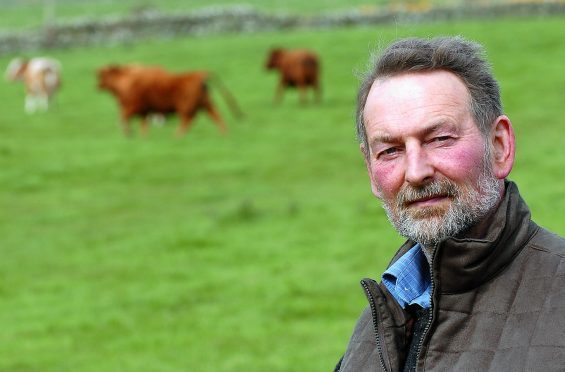The summer shows are a great time for catching up with fellow farmers, hearing the latest gossip and discussing the issues of the day. Chat about the summer weather, livestock prices and the state of the crops usually predominate and this year was no different.
However, although we have had a pretty good summer in the north, crops are looking well and, thanks to the weakness of sterling, livestock prices remain fairly buoyant, a dark cloud of Brexit uncertainty continues to hover in the background.
It is over a year since the UK voted to leave the UK and the future of our livelihoods is still uncertain.
The agricultural industry is beginning to get a sense of where we would like to be in five years’ time but confusion seems to reign amongst out political leaders with UK Government ministers giving out conflicting messages.
The Environment Secretary Michael Gove’s statements vary according to the audience he is addressing (this week it was reassuring Danish fishermen they would have continued access to UK waters), meanwhile, the Scottish Government and other devolved administrations seem to be excluded from post Brexit policy making.
Most farmers now realise that whatever shape future agricultural support takes, there will be less funding available and, unless the market place can make up the difference, incomes will be reduced.
Scotland’s rural economy depends on a vibrant agricultural sector, especially in the Highlands and Islands, and it is important that the case is made to government for continued targeted support for farming and other rural businesses in the more fragile areas.
This will be best achieved if Scotland retains control over agricultural and rural development policy after Brexit, enabling it to tailor funding to our particular needs.
There has also been a lot of speculation about the impact of Brexit on tenant farming and prospects for the next generation of farmers. Will there be a silver lining in the Brexit cloud for the tenanted sector as support becomes more targeted, slipper farming disappears and landowners look for someone to farm land they can no longer claim subsidy on?
Alternatively, will existing farming operations swallow up land as it becomes available, compounding the breakdown of the traditional farming ladder which used to allow new entrants to progress from a small tenanted farm to a larger more viable unit?
The trend of farm amalgamations is already sparking concerns about the demise of smaller units and who will have the capital to take on some of these large farming businesses and where will new generation of farmers come from.
The current state of national turmoil and confusion has at least stimulated us all to consider how we will manage our businesses to cope with a reduced subsidy regime and one which will inevitably place more environmental obligations on us as land managers.
We do, however need to present a united front and our political leaders should come together to agree an agricultural strategy for Scotland which will include vital direct support for our fragile areas.
It would be nice to see party differences put aside to achieve this goal, including Scottish Tory MPs prepared to flex their muscles to influence a weakened UK government for the national good.
* Angus McCall farms at Culmaily Farm, near Golspie. He is an executive director at the Scottish Tenant Farmers’ Association










